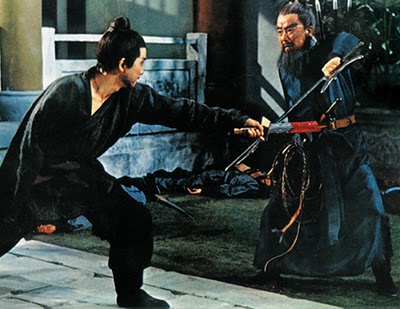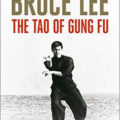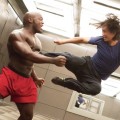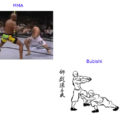Last week, on January 7, 2014 the famous Hong Kong entertainment mogul and philanthropist Run Run Shaw died. Having lived a long life, to the respectful age of 107, Sir Shaw (Queen Elizabeth II knighted him in 1977) built Shaw Brothers Studios into one of the largest film production companies in the world. If you like martial arts movies, you have Run Run Shaw and Shaw Studios to thank. Shaw Studios, and its predecessor entities, essentially created and popularized the martial arts film genre, starting in the early days of cinema in the 1920s. Shaw Brothers Studios created over 1000 movies, and in its hay days in the mid 1960s, was the largest privately owned studio in the world. An interesting question is how the term “Kung-Fu” came to its modern day us of describing Chinese martial arts (for example, at Full Potential Martial Arts, the origins of some of what we teach lies in Fujian White Crane Kung-Fu).
Sir Run Run Shaw, probably more than any other person, was responsible for the creation and popularization of the so-called “Kung-Fu” movie genre, and the meteoric rise in the popularity of martial arts throughout the world. The Kung Fu movie genre, which existed in China and the east as early as in the 1920s, became popular in the United States and in the west starting in the 1970s. Kung-Fu movies have drawn people’s interests in seeking martial arts training, and have been instrumental in many kids and adults engaging and benefiting from martial arts. For that, we need to be thankful. Of course, another key contributor to the meteoric popularization of martial arts and Kung-Fu in the west is Bruce Lee, and his appearance in movies and in the television series “The Green Hornet.”

The term “Kung-Fu,” which was popularized by Shaw Brothers Studio and its contemporaries, as well as by later entrants into the field, such as Jackie Chan and Jet Li, is widely used today to describe various Chinese martial arts. However, the use of the term “Kung-Fu” to describe martial arts is really a misnomer, as Kung-Fu (also spelled “gung fu” and “gungfu”) is a Chinese term which means “hard work”, “workmanship” or “skill gained through committed effort” – in any field, and not necessarily martial arts related! The correct Chinese (Mandarin) word for martial arts is “wushu” and not “Kung-Fu”. According to linguist and lexicographer Ben Zimmer, the term “Kung-Fu” for describing Chinese martial arts came to use initially in the 20th century in Cantonese speakers who immigrated to California. In 1958, American-born martial arts student James Yimm Lee published the book “Fighting Arts of the Orient: Elemental Karate and Kung Fu”, as well as follow on books. Those are the earliest references in the west for the term “Kung-Fu” in the martial arts context. In 1962, James Yimm Lee met Bruce Lee (no relation). Bruce Lee was impressed with James Yimm Lee’s books on Kung Fu, and chose the title “Chinese Gung Fu” for his own book. Adoption of the term in Black Belt Magazine issues of the period, and through the Kung-Fu movie genre cemented the term we know today as “Kung-Fu” as referring to Chinese martial arts. Hence is the origin of Kung-Fu.
In memory of Sir Run Run Shaw, here are some notable examples of the Kung-Fu movie genre:
The One-Armed Swordsman, a Kung-Fu movie that was released in 1967, to break the box office records in Hong Kong. It featured heavy sword play and bloodletting (which inspired the cinematography in Quentin Tarantino’s “Kill Bill” movies).

Five Fingers of Death (aka King Boxer), which features a promising martial arts student, his master, thugs and, of course, love and romance. Five Fingers of Death was one of the first martial arts movies to be released in the US (by Warner Brothers), and started the Kung-Fu film craze in the west.

The 36th Chamber of Shaolin (aka Shaolin Master Killer), which follows a Shaolin martial arts disciple, and is considered one of the greatest one of the greatest Kung Fu films of all times.

And, of course, we have to remember Bruce Lee’s breakout film, The Big Boss (aka Fists of Fury), which was distributed by Shaw Studio’s rivals Golden Harvest.

Sir Run Run Shaw has been a keen practitioner of Qigong. In addition to the entertainment empire he created, Sir Shaw has donated to numerous educational institutions in China and Hong Kong, and more than five thousand buildings in college campuses bear his name. In 2004, Sir Run Run Shaw established the Shaw Prize, and annual award recognizing “individuals, regardless of race, nationality and religious belief, who have achieved significant breakthroughs in academic and scientific research or application, and whose work has resulted in a positive and profound impact on mankind.” The Shaw Prize presents award for achievements in the fields of astronomy, life science and medicine, and mathematical sciences, and has been called “The Nobel Prize of the East”.
So now that we know the origin of the term “Kung-Fu”, we can keep on training!




